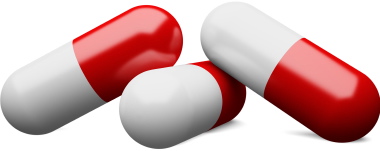
By Sydney Lupkin and Elizabeth Lucas, Kaiser Health News, and Victoria Knight.
Dozens of patient advocacy groups, like the Bonnie J. Addario Lung Cancer Foundation and the National Coalition for Cancer Survivorship, recently appeared in national advertisements objecting to a Trump administration proposal that could limit drugs covered by Medicare providers.
But a Kaiser Health News analysis found that about half of the groups representing patients have received funding from the pharmaceutical industry.
Drugmakers funneled more than $58 million to the groups in 2015 alone, according to financial disclosures in KHN’s “Pre$cription for Power” database, which tracks the little-publicized ties between patient advocacy groups and drugmakers.
As patient organizations gain ground lobbying Congress and the administration, experts have begun to question whether their financial ties could push them to put drugmakers’ interests ahead of the patients they represent.
The advertisement, which ran in national newspapers, attacked proposed changes to Medicare Part D’s “protected” drug classes, which require that “all or substantially all” drugs must be covered by all insurers. The medicines involved include oral cancer drugs, HIV medicines and antipsychotics.
The protection can have the effect of guaranteeing sales to Medicare patients no matter the price tag.
The proposed rule would give insurers more opportunities to instead steer patients toward lower-cost therapies and generics using prior authorization or step therapy, in which patients must try cheaper drugs before they can switch to options that are more expensive.
It would also allow protected drugs to be left off Medicare Part D formularies when price hikes exceed inflation or new formulations of drugs don’t offer a “significant innovation” over existing versions.
“It’s wrong and it will put patients’ lives at risk,” reads the ad paid for by the American Cancer Society Cancer Action Network above a list of 56 other patient advocacy groups who presumably agree. Underneath, a link directs readers to an online form to send pre-written emails to members of Congress and the administration.
The government proposal’s goal, however, isn’t to end coverage for drugs in protected classes, said Rachel Sachs, an associate law professor at Washington University in St. Louis who specializes in health care. Its goal is to give plans more leverage to bargain for better discounts. If there’s a chance an insurance plan won’t cover a drug, the provider has more negotiating power.
The Cancer Action Network’s six-figure ad buy ran for three weeks starting Jan. 17. It appeared in print and online in The New York Times and The Washington Post, as well as local publications in Washington, D.C., according to Cancer Action Network spokeswoman Alissa Crispino. About 4,500 people used the online email tool.
It’s important to make sure cancer patients can get “cutting-edge” treatments, said Keysha Brooks-Coley, vice president of federal affairs for the Cancer Action Network. “This is really an access issue,” she said.
The lobby for brand-name drugmakers, the Pharmaceutical Research and Manufacturers of America, takes the same stance, according to its submitted comments on the proposal.
But access to drugs means more than insurance coverage, said Karuna Jaggar, the executive director of Breast Cancer Action, a patient group that was not invited to be listed in the ad and hasn’t accepted corporate funding for two decades to avoid the appearance of bias. “If people can’t afford it, the reality is they cannot access it.”
Given the ad’s selective understanding of “access” to exclude cost and the patient groups’ industry ties, she asked, “Can we trust them?”
The American Cancer Society Cancer Action Network communicates with its funders, which include drugmakers and others, but the group sets its own agenda, Brooks-Coley said.
KHN launched its Pre$cription for Power database in spring 2018. It now includes nearly 14,000 transactions, totaling $163 million in donations from 26 drugmakers to 650 patient groups, in 2015.
The patient groups often don’t disclose their donors, so the information comes from drugmakers’ financial disclosures, some of which are voluntary. Not all companies publicly disclose their charitable giving, so KHN estimates are likely low.
Although there are occasions when what’s best for patients is the same as what’s best for drugmakers, people should consider patient advocacy group statements with a “skeptical eye” if groups have financial ties to the pharmaceutical industry, said Matthew McCoy, a medical ethics and health policy assistant professor at the University of Pennsylvania.
[khn_slabs slabs=”868273″]
Drugmakers and patient advocacy organizations have fundamentally different missions, he said. One wants to make money for shareholders. The other wants to serve patients. Since their goals will inevitably diverge, it’s important that patient groups aren’t swayed by their funders, he said.
It can be easy to view a pharmaceutical company as an ally when its contributions help keep the lights on, McCoy said. “I think we have a lot of evidence from research on financial conflicts of interest in other areas of health care to know that the influence often is unconscious to the people who are actually experiencing it.”
Still, Sachs said she can understand why patient advocacy groups oppose changes to the six protected classes, even if they lead to lower drug prices.
“The question is, what happens if negotiations between pharmaceutical companies and the Part D plans fail?” Sachs said. “In at least some cases, the Part D plan will be able to say simply it’s going to exclude you from coverage because of the price of the drug.”
Kaiser Health News, a nonprofit health newsroom whose stories appear in news outlets nationwide, is an editorially independent part of the Kaiser Family Foundation.


